Overview
On August 12, 2025, Perplexity made headlines with an unsolicited all cash offer of 34.5 billion dollars to buy Google Chrome. The timing could not have been more dramatic. The bid landed while a federal judge is weighing remedies in a landmark antitrust case that found Google unlawfully maintained a monopoly over search. Viewed superficially, the offer resembles a bold publicity play. Examined strategically, it is a calculated move that forces regulators, competitors, investors, and customers to rethink how distribution, data, and platform control intersect in an AI first era.
The legal landscape
To be precise about the litigation, the pressure to compel structural change comes from the Department of Justice and private plaintiffs, and it is being litigated before a federal judge. Remedies under consideration range from changes to default search agreements to more radical proposals involving divestiture of assets such as Chrome. These remedies are being weighed by Judge Amit Mehta. Legal observers expect a spectrum of outcomes rather than a single simple solution.
Why Perplexity might make the offer
There are at least two plausible rationales behind Perplexity’s move. One is opportunism. If the court orders Google to divest Chrome, a ready buyer could accelerate any structural transition and position itself as a scale on ramp for next generation AI search. The other rationale is strategic signaling. Perplexity is a fast growing AI search company, and the bid dramatically elevates its public profile. The move draws attention to Perplexity’s existing browser efforts and forces a public discussion about who controls distribution, telemetry, and default settings.
What a forced sale would change
Browsers are far more than simple interface software. They are a primary distribution layer for search, embedding defaults, extensions, and integrated services at scale. Control of a widely used browser confers privileged access to telemetry and to the on ramps that shape user behavior. If Chrome were separated from Google, the buyer would inherit a massive user base and a powerful channel to influence default search choices. That could materially reduce Google’s unilateral ability to steer traffic and advertising revenue to its own services. At the same time a divestiture would raise enormous operational, security, and liability questions because Chrome is tightly integrated with Google services and infrastructure.
Practical obstacles to divestiture
There are strong practical and legal reasons to be skeptical that Chrome will change hands as a direct result of the current litigation. Many antitrust experts and market analysts view divestiture of Chrome as a high cost, low probability outcome. The court might favor remedies that increase interoperability, require mandatory changes to commercial agreements, or impose data sharing obligations, rather than ordering an outright sale of a core product. In other words, judges often prefer tailored behavioral remedies that encourage competition without severing a central piece of a complex ecosystem.
Strategic effects even if no sale occurs
Even if a sale never occurs, Perplexity’s bid has immediate effects. It reframes negotiation leverage during litigation and signals to investors and other platform players that control of the browser is strategically valuable to any company seeking to compete on search and user experience. The offer may encourage other browser vendors and device makers to reconsider default settings, partnership terms, and their role in distribution. It also accelerates public debate about how regulators should treat platform level controls in an era when generative AI models can replace traditional search experiences and erode conventional ad revenue streams.
Risks for Perplexity and Google
For Perplexity, the acquisition risks are substantial. Running a global browser is a vastly different business from developing a search model. Chrome serves billions of users and requires continuous investment in security, patching, standards compliance, and privacy protections. Integration costs, legacy operational dependencies, and potential legal exposure make the acquisition a daunting operational challenge. Even with external financing or equity partners, Perplexity would need to scale engineering, security, and regulatory capabilities quickly to avoid a damaging transition period.
For Google, the response is predictable and forceful. Chrome is core to Google’s ecosystem, and the company will defend both the asset and the integrations that make it valuable. Google can point to the technical complexity of separating Chrome from its underlying services, to the risk such a split would pose to user security and privacy, and to the potential harm to competitive neutrality if divestiture is mishandled. Expect vigorous legal arguments, public policy lobbying, and outreach to device makers and enterprise customers.
Questions for policymakers and legal analysts
Policymakers and legal analysts should consider several concrete questions as the situation unfolds. First, will the court favor structural remedies or behavioral changes? Structural remedies such as divestiture are dramatic and difficult to implement, but they create definitive new market structures. Behavioral remedies are more flexible, but they can be harder to enforce and easier for dominant firms to circumvent over time. Second, what technical and contractual seams tie Chrome to Google services, and how feasible is a clean separation? Third, how would any change affect data flows, privacy obligations, and contractual defaults with device makers, carriers, and operating system vendors? Fourth, how will other major platform owners respond strategically if Google loses distribution control or if regulatory pressure increases?
What executives should watch
Executives and policy leaders should watch several specific indicators. Track the judge’s remedy decision and the timetable for implementation. Monitor whether regulators and courts show a preference for structural divestiture or for mandated behavioral change. Pay attention to strategic moves by Apple, Microsoft, and other browser vendors, which may reposition themselves in response to a reshaped landscape. Finally, evaluate how any restructuring might accelerate the commercial shift from ad click models toward subscription and premium experiences or toward AI driven monetization approaches that embed sponsored content directly into AI responses.
Distribution and power in an AI era
The Perplexity bid reframes competition in the context of generative AI. Control of distribution channels may become as important as model performance. Owning a browser provides three distinct advantages. It grants a direct channel to influence default search settings and to capture telemetry at scale. It creates opportunities to embed proprietary services and AI agents directly into the user experience. And it gives a buyer leverage over which models and services are surfaced by default. In an AI first economy these advantages can be strategically decisive.
Public interest concerns
There are countervailing public interest concerns to weigh. A rapid sale of Chrome to a smaller or less established buyer could create fragmentation in standards and privacy protections. It could also concentrate risk if a buyer lacks the operational capacity to maintain the browser. Regulators will need to weigh the potential competitive upside of a divestiture against the risks to users and the web ecosystem.
Conclusion
Ultimately Perplexity’s offer is a provocative test case about what structural change might mean in the age of AI. Whether the bid is a bargaining chip, a publicity gambit, or the opening move in a genuine acquisition effort, it brings heightened clarity to a long simmering debate about platform power, distribution, and data control. For leaders in technology, finance, and policy the central question is not only whether Chrome will change hands, but how market structures should be designed to preserve competition, protect users, and encourage innovation in an era dominated by generative models.
This moment offers a choice. Treat the bid as an isolated spectacle, or treat it as a strategic inflection point that requires revisiting assumptions about how platforms are governed. The outcome will matter for decades. It will shape how discovery works, how AI interfaces are monetized, and how competition is preserved in a world where distribution is as valuable as the models that drive intelligence.





